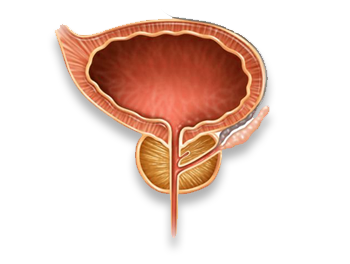Prostate Biopsy
What is Prostate Biopsy? How is the Patient Prepared for Prostate Biopsy? Techniques of Prostate Biopsy, Possible Post-Prostate Biopsy Complications
Prostate cancer is rarely symptomatic except for in advanced stages, and most prostate cancer patients manifest no symptoms at all. Therefore, an anomaly during digital rectal examination or a rise in PSA level arises the suspicion of prostate cancer, and these patients should undergo prostate needle biopsy. Prostate needle biopsy is generally performed through the rectum with the aid of ultrasound. An 18 G needle is used to retrieve a tissue sample from the prostate.
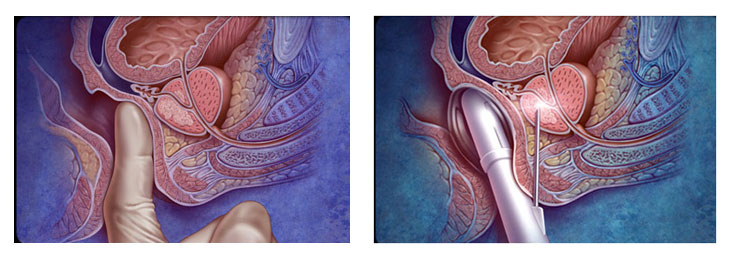
Preparing the patient
Patients must be informed on the procedure and explained about its side effects and possible complications. Use of blood thinners (Aspirin, Coumadin, Plavix, etc.) should be ceased 7-10 days before the prostate biopsy.
Antibiotic Use
Antibiotics can be used for protection against infection in prostate biopsies. There are also centers which do not use antibiotics. However, the AUA (American Urological Association) strongly recommends use of antibiotics prior to prostate biopsies. We use antibiotics prior to and after the procedure in our clinic. Studies conducted show that antibiotic use decrease the rate of infection and minimize complications. However, bacteremia or sepsis may occur in 0.1-0.5% of the patients undergoing prostate biopsy.
Cleansing of the Colon
Colon cleansing is performed in order to minimize the amount of feces in the rectum. Hence, the prostate can be viewed better during transrectal ultrasonography and the risk of any potential prostate infection is reduced.
Analgesia
During prostate biopsy, the prostate gland is anesthetized using local anesthetics to ensure pain control. For this procedure, generally lidocaine 2% is administered around the prostate nerves or the intersection of the prostate and the seminal vesicles. This way, a nearly complete analgesia is obtained and patients feel almost no pain (Figure).
Techniques of prostate biopsy
Location of biopsy and number of samples retrieved
Firstly, the dimensions of the prostate is measured using the ultrasound, and its size is calculated. A biopsy probe inserted with an 18 G needle is used for the biopsy procedure.
Biopsy techniques and number of samples retrieved are as below.
Sextant Biopsy (six-core biopsy)
Sextant is a nautical instrument used to measure the distance of celestial bodies and means sixth part of a circle. Biopsy samples are retrieved from the lateral peripheral zones of base, mid-zone and apex of the prostate. This way, 6 biopsy samples are retrieved, 3 from the left and 3 from the right peripheral zones. (Figure)
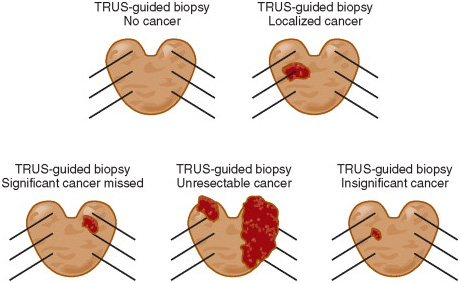
Extended biopsy (10-12 core biopsy)
Studies conducted show that rate of detecting cancer increases with lateral biopsies obtained in addition to sextant (six-core) biopsies. Today, it is accepted that sextant (six-core) biopsies are inadequate in detecting cancer, and biopsies are generally performed as 12-core biopsies (Figure). Transitional zone biopsies may be performed additionally in men with prostate volume greater than 50 cc. Seminal vesicle (testicle sacs) biopsies are not performed as a routine unless there is an abnormality detected during the examination or the ultrasound. Some centers perform vesicle biopsy as a routine when the PSA is greater than 30.
Most centers prefer extended biopsy technique. Rate of detecting cancer is greater in extended biopsy technique than in six-core (sextant) biopsy.
In extended biopsies, as many samples as possible should be retrieved from the apex and anterior zones of the prostate (Figure 7.2 Oncology). When retrieving samples from the apex zone of the prostate, the angle of the needle should be observed carefully. When the biopsy needle is advanced through the rectal wall with an angle of 45 degrees, the tissues in the apex zone are missed, and no samples can be retrieved from this zone (Figure 7.2).
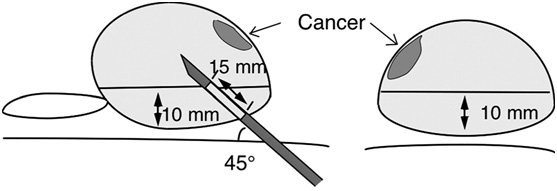
Figure 7.2. When retrieving samples from the apex zone of the prostate, the angle of the needle should be observed carefully. When the biopsy needle is advanced through the rectal wall with an angle of 45 degrees, the tissues in the apex zone are missed, and no samples can be retrieved from this zone.
Furthermore, biopsy needles can retrieve a tissue sample at a mean distance of 15-17 mm. Such distance is not enough for retrieving tissue samples from the apex of the prostate. Due to all these reasons, all these points should be taken into consideration when performing prostate biopsies. One of the mistakes made during prostate biopsies is shown in Figure 7.3.
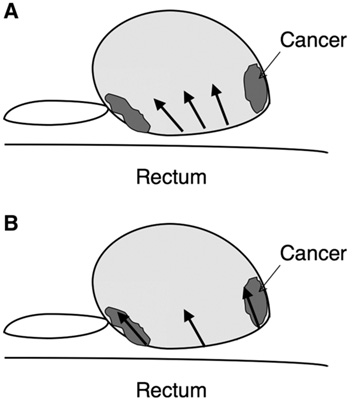
Figure 7.3 A. Biopsy sample locations are close, and samples are retrieved only from the mid-zone of the prostate. The cancers in the base and apex zones of the prostate are missed. B. Sampling locations are at a suitable distance, and samples are retrieved from all zones of the prostate.
Saturation Biopsy
In patients who have undergone one or two biopsies before and not been diagnosed with prostate cancer, if the PSA is still high or there are findings causing suspicion of prostate cancer during digital rectal examination, these patients should undergo biopsy again. Generally with these patients, saturation biopsies are performed during which twenty or more samples are retrieved (Figure). Saturation biopsy can be performed transrectally or transperineally. Studies conducted show that, in general, sufficient number of samples could not be retrieved from the anterior and apical zones in patients with negative results from their previous biopsies. The advantage with the transperineal biopsies is that it allows retrieving sufficient samples from apical and anterior zones of the prostate. Therefore, we prefer transperineal biopsy in rebiopsies.
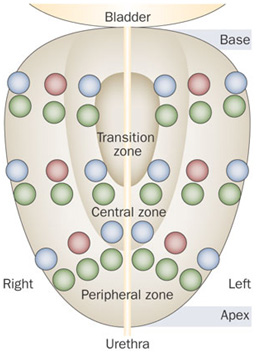

Possible post-prostate biopsy complications
Infection
It is a complication that can occur after prostate biopsies. In general, it develops as a symptomatic urinary system infection accompanied by mild fever and can be treated easily with oral or intravenous antibiotics. However, recent studies show that infections accompanied by high fever such as urinary system infection and acute prostatitis may also occur in 2% of the cases. Importantly, there is also an increasing resistance to quinolone antibiotics used for protection in prostate biopsies.
Bleeding
Hematuria can occur in nearly 23-63% of the patients after prostate biopsies. Nearly 2.1-21% of the patients can encounter rectal bleeding. However, both generally heal on their own.
Book an Appointment with Dr. Fatih Atug
Cantact Dr. Fatih Atug
Fatih Atug, M.D.
Urologist and Robotic Surgery Specialist
hidden +90 212 234 5958
hidden +90 532 234 5504
hidden info@fatihatugmd.com
hidden Harbiye Mahallesi, Maçka Caddesi,
Bahriye Apt. No:13 D: 3
Şişli / İSTANBUL
 |
 |
 |




